6 Days Libya Ancient Capitals
Day 1 Tripoli
Excursions:Tripoli old city.
Highlights:Gorgi Mosque, Arch of Marcus Aurelius and Karamanli house
Meals: breakfast, lunch, dinner.
Schedule depending on time of arrival
We start the tour by visiting Tripoli, known as the ‘’White Bride of the Mediterranean’’. The walled old town of Tripoli encloses, arguably, the most charming medina in all of North Africa. After lunch in an old town restaurant, we’ll explore the warren of streets and alleyways, including the bustling souks, each devoted to a different trade, the historic house of the 18th century governor Karamanli, c, the 16th century Dragut Mosque, burial place of the famous pirate of that name, the 19th century Gorgi Mosque, the 18th century former British Consulate, the former Turkish Prison, now a school, St. George’s Orthodox Church, the 19th century Ottoman clock tower and the sole surviving building of Roman Oea, the 2nd century Arch of Marcus Aurelius. Overnight in Tripoli.
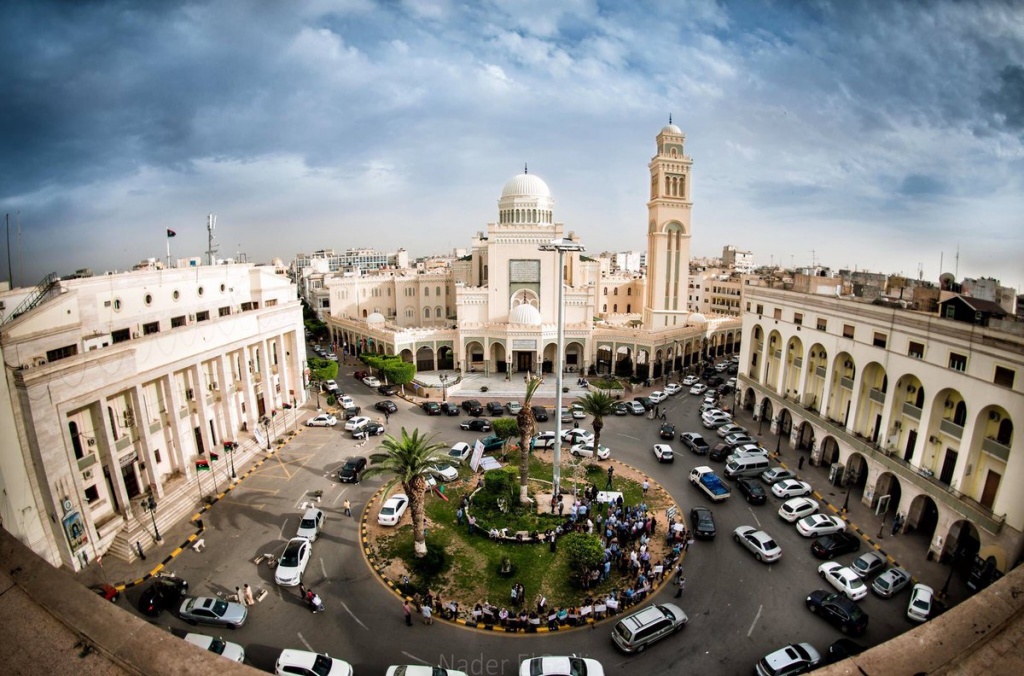
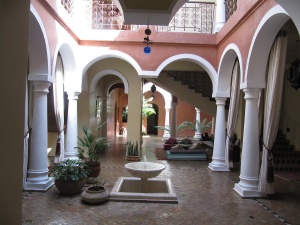
Day 2 Tripoli – Qasr Al-Haj – Nalut – Ghadames
Excursions: Qasr Al-Haj, Nalut, and Ghadames
Highlights:The old Berber qasrs of Qasr al-Haj and Nalut.
Meals: breakfast, lunch(light), dinner.
Today, we leave Tripoli and drive into the Berber heartland of the Jabal Nafusa. Our first stop will be at Qasr al-Haj to visit the most beautiful Berber granary qasr (castle) in Libya, and it’s no wonder that Dan Cruickshank chose this imposing 13th century fortress, circular in build, as one of ‘’The World’s 80 Greatest Treasures’’ in his recent BBC TV series. We continue to Nalut, and then to the UNESCO World Heritage Site of Ghadames, known as the ‘’Jewel of the Sahara’’, where we stay for two nights. Overnight in Ghadames.
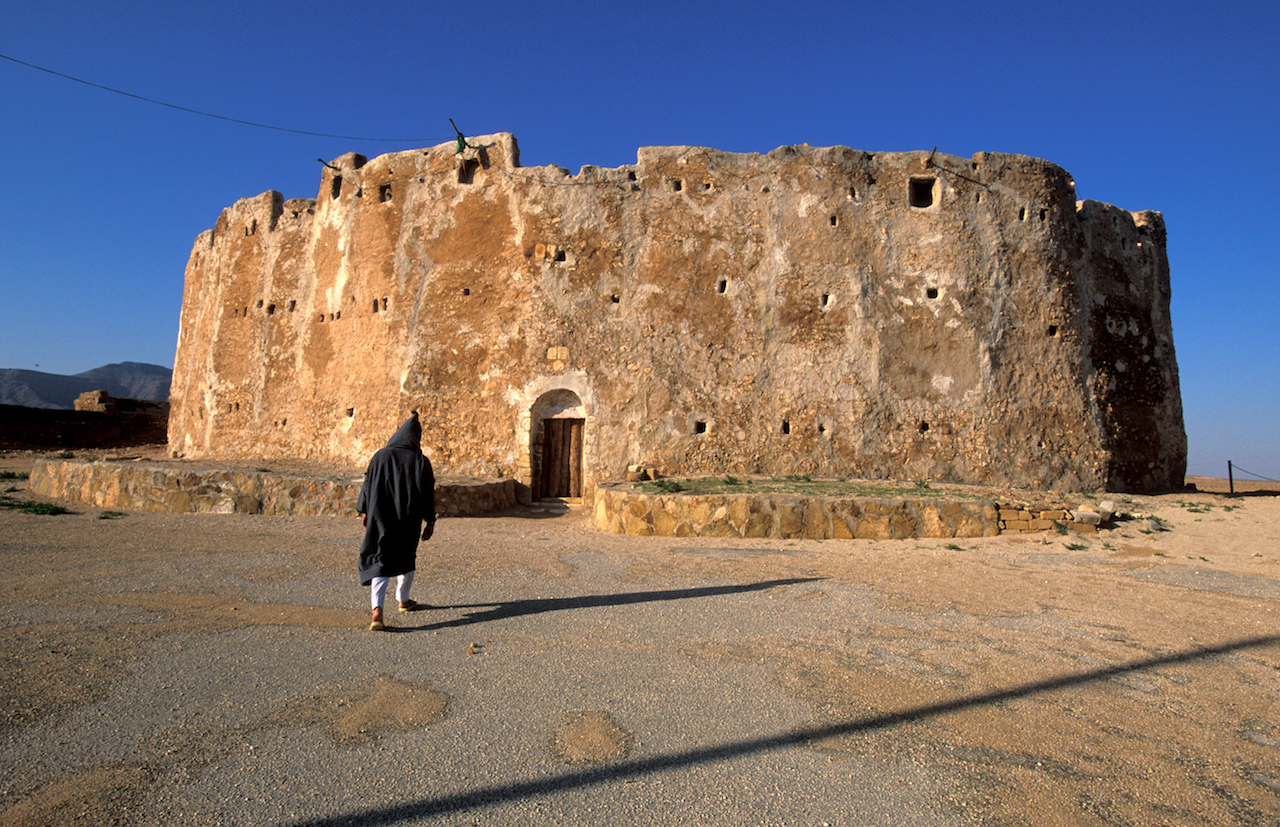
Day 3 Ghadames
Excursions: Ghadames old city (UNESCO), guided by a local Ghadames guide.
Short desert 4×4 tour, to visit Ras al-Ghoul and watch the sunset.
Highlights:Ghadames Old Town, Lunch in a Traditional House and the Sand Dunes of the Grand Erg.
Meals: breakfast, lunch (traditional), dinner.
Entering via the ancient gateway of Bab al-Burr, today we explore the labyrinthine streets and enclosed passages of Ghadames’ old town, once inhabited by the tribes of the Bani Wazid and the Bani Walid. Renowned for its distinctive architecture, we visit the various small squares, the old mosque and a madrasa (Koranic school), see the fruit and vegetable gardens and view the ancient system of irrigation. Lunch(included) will be taken in a richly decorated traditional house in the age-old manner, sitting on the floor eating from dishes. We climb on to the roof of the house to see where the women, forbidden to wander the streets alone, would use the rooftops as a thoroughfare. We also visit Ghadames Museum with its historical and ethnographic displays.
Later in the afternoon, we climb aboard four-wheel drive vehicles to visit Ras al-Ghoul (Summit of the Ghost), the remains of an ancient Roman fort before heading for the sand dunes of the Grand Erg Oriental, bordering the countries of Libya, Algeria and Tunisia to watch the sunset. Overnight in Ghadames.
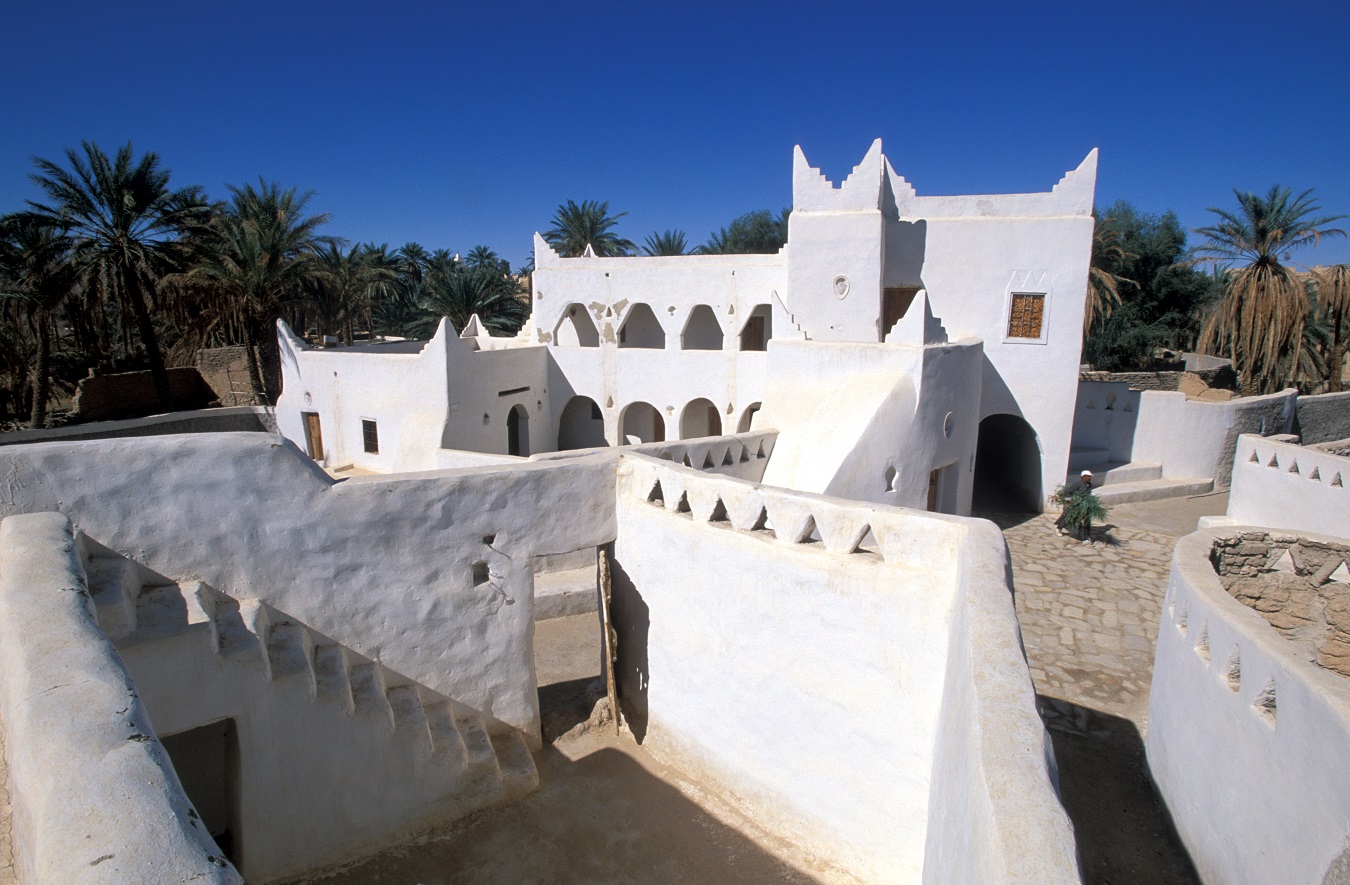
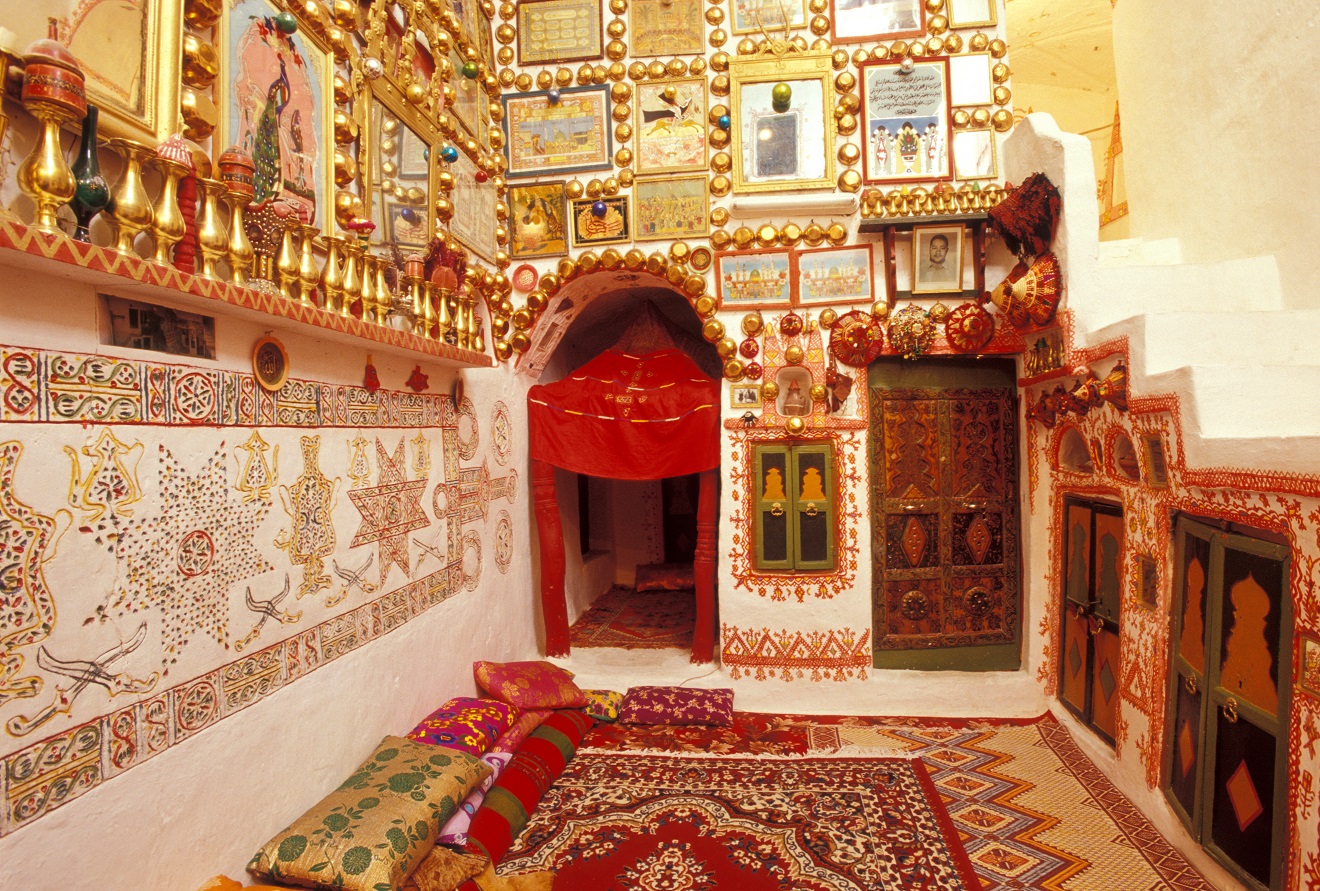
Day 4 Ghadames -Kabow – Tormisa – Gharyan – Tripoli
Excursions: Kabow, Tormisa and Gharyan
Highlights:Kabow qasr, Abandoned village of Tormisa, Troglodyte house of Gharyan.
Meals: breakfast, lunch(light), dinner.
Leaving Ghadames, head back into the Jabel Nafusa to visit another ancient qasr at Kabow before driving to the abandoned village of Tormisa with its stunning cliff top views. Continue to Gharyan to visit a troglodyte house and the pottery stalls for which the town is famous. Road mileage today: 570kms Overnight in Tripoli.
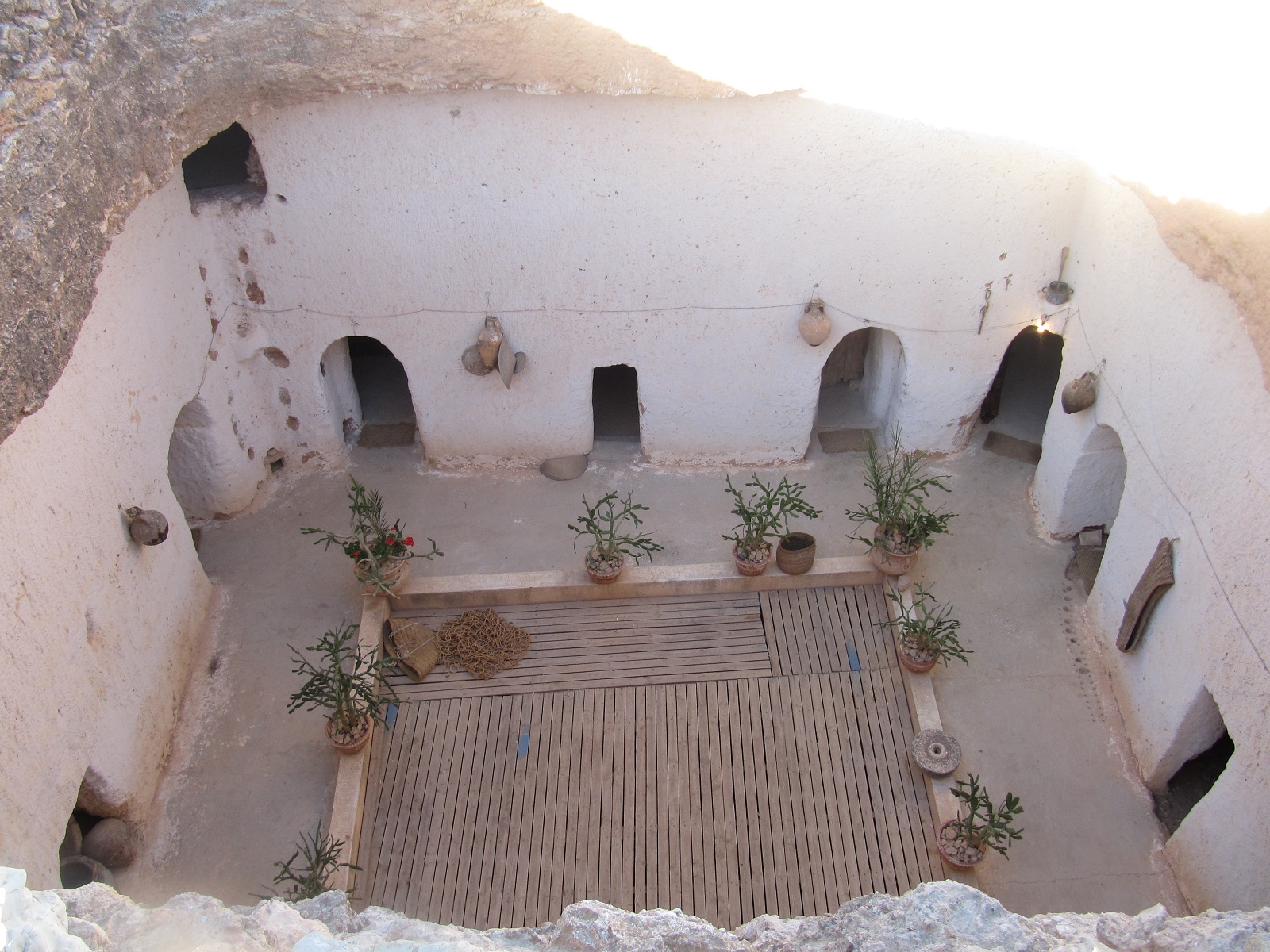
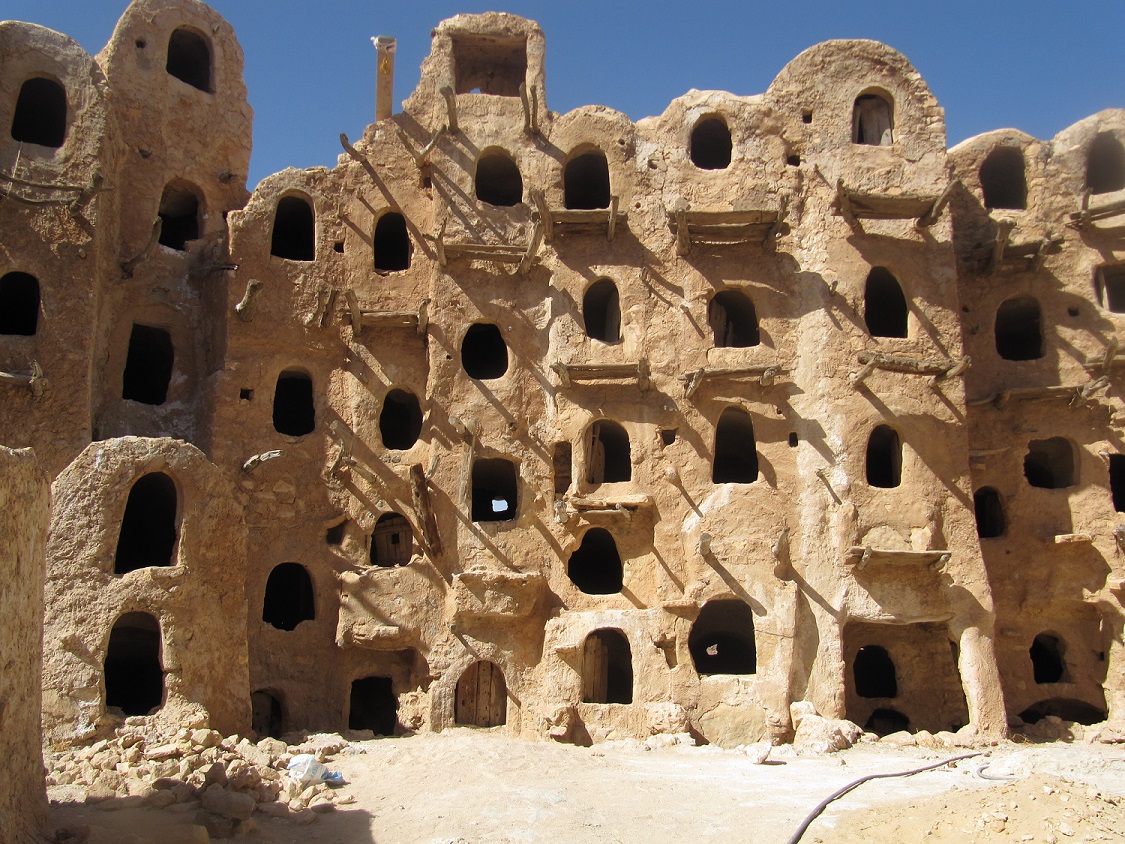
Day 5 Tripoli – Leptis Magna – Tripoli
Excursions: Leptis Magna (UNESCO), guided by a local Leptis Magna guide.
Highlights:Leptis Magna Theatre, Amphitheatre, Baths, Imperial Forum and the Market.
Meals: breakfast, lunch (light), dinner.
Full day excursion to the UNESCO World Heritage Site of Leptis Magna, the largest and best-preserved Roman city in the world that came to prominence in the 2nd century AD under its native son, the Emperor Septimus Severus. Following his reign, the city fell into decline until revived by the Emperor Justinian in the 5th century AD at which time it fell under Byzantine rule. The vast site is truly spectacular: the sites include the triumphal Arch of Septimus Severus, the Hadrianic Baths complex, the Palaestra (Athletics Ground), the Nymphaeum (Temple of Nymphs), the huge Imperial Forum, the Basilica, the Arches of Tiberius and Trajan, the Theatre with its beautiful backdrop against the Mediterranean Sea, the Sanctuary of the Divine Emperors, and the Market with its unique kiosks which, at the time of construction, were a groundbreaking design in the Roman world. In the eastern section of Leptis Magna we will see the Circus and enormous Amphitheatre with seating for over 15,000 spectators. We will visit the vast arena, and see the gladiators’ anterooms and animal enclosures. En route back to Tripoli, if open a visit will be made to the 2nd century Villa Sileen, the home of a wealthy Byzantine that was discovered in 1974. The wall paintings portray scenes such as gladiatorial combat and chariot racing while the mosaics display river scenes that include sea nymphs, birds and animals. Overnight in Tripoli. Road mileage today: 280 km.
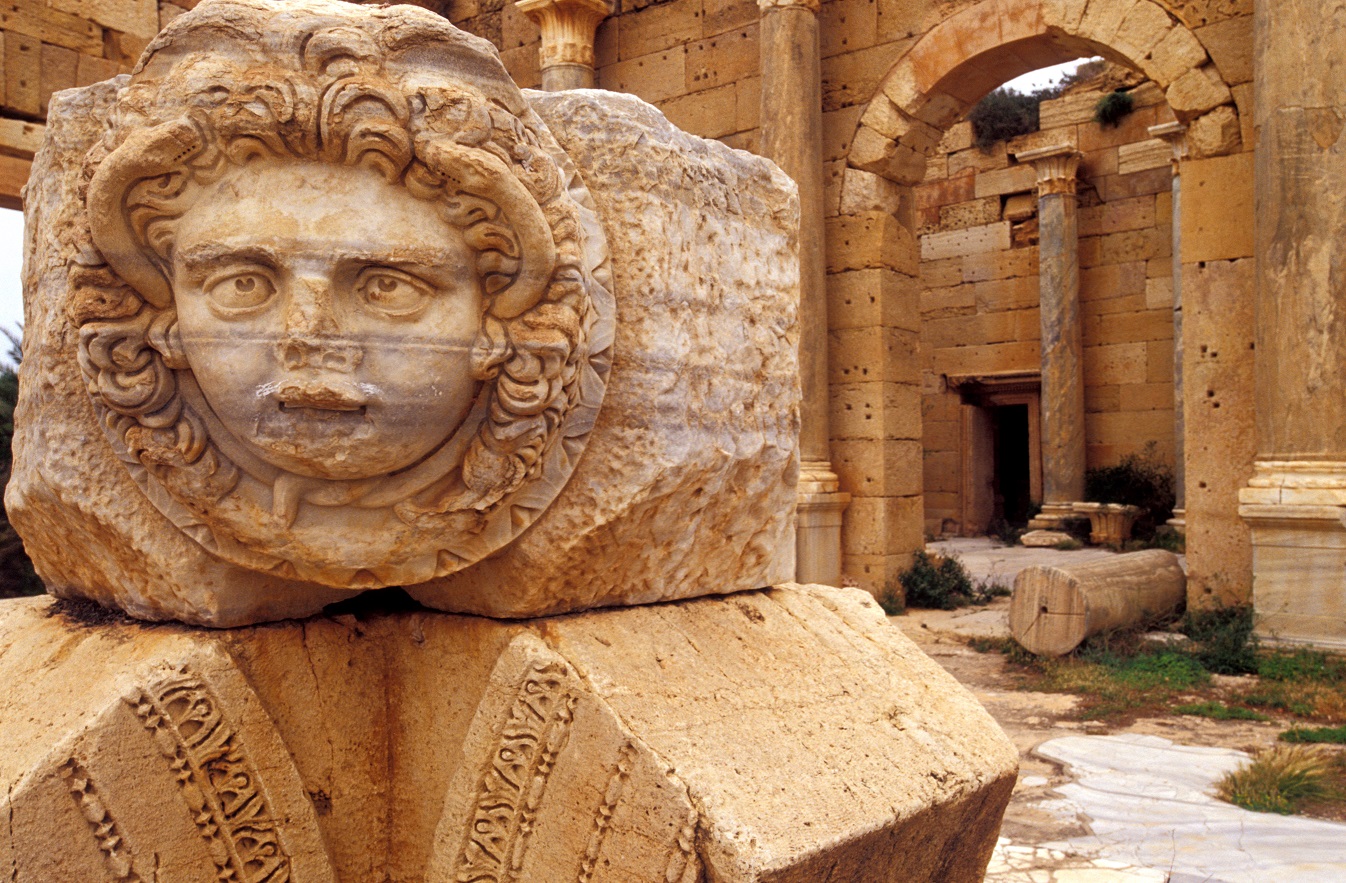
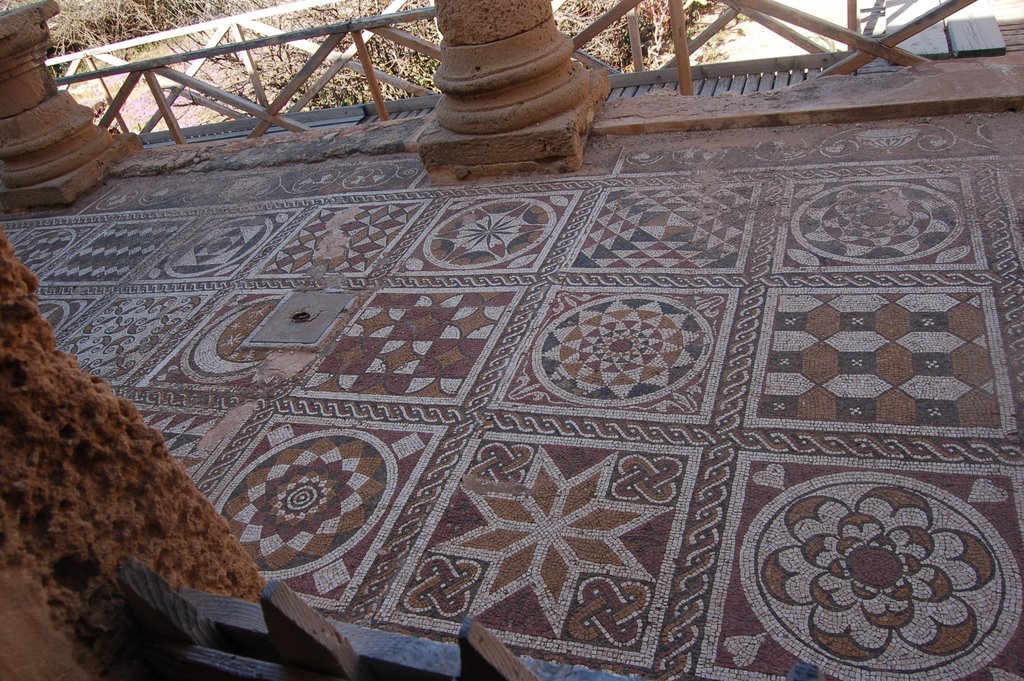
Day 6 Tripoli – Sabratha – Home
Excursions: Sabratha with local Sabratha guide. (UNESCO).
Highlights:Roman Theatre of Sabratha
Meals: breakfast, lunch (light)
Schedule depending on time of departure.
Continue to the UNESCO World Heritage Site of Sabratha, originally founded in the 4th century BC. It later fell under Greek influence before Rome took hold in the 1st century AD. The most spectacular monument is the Theatre, featuring 108 Corinthian columns rising to a height of twenty metres above the stage. Below the stage you will see marble friezes depicting mythological figures including, inter alia, the Three Graces, the Judgement of Paris and the Nine Muses. We also see the Punic Mausoleum of Bes, the Temple of Antoninus, the Temple of Zeus, the Court of Justice and the great Roman Forum. (Museum can be closed)
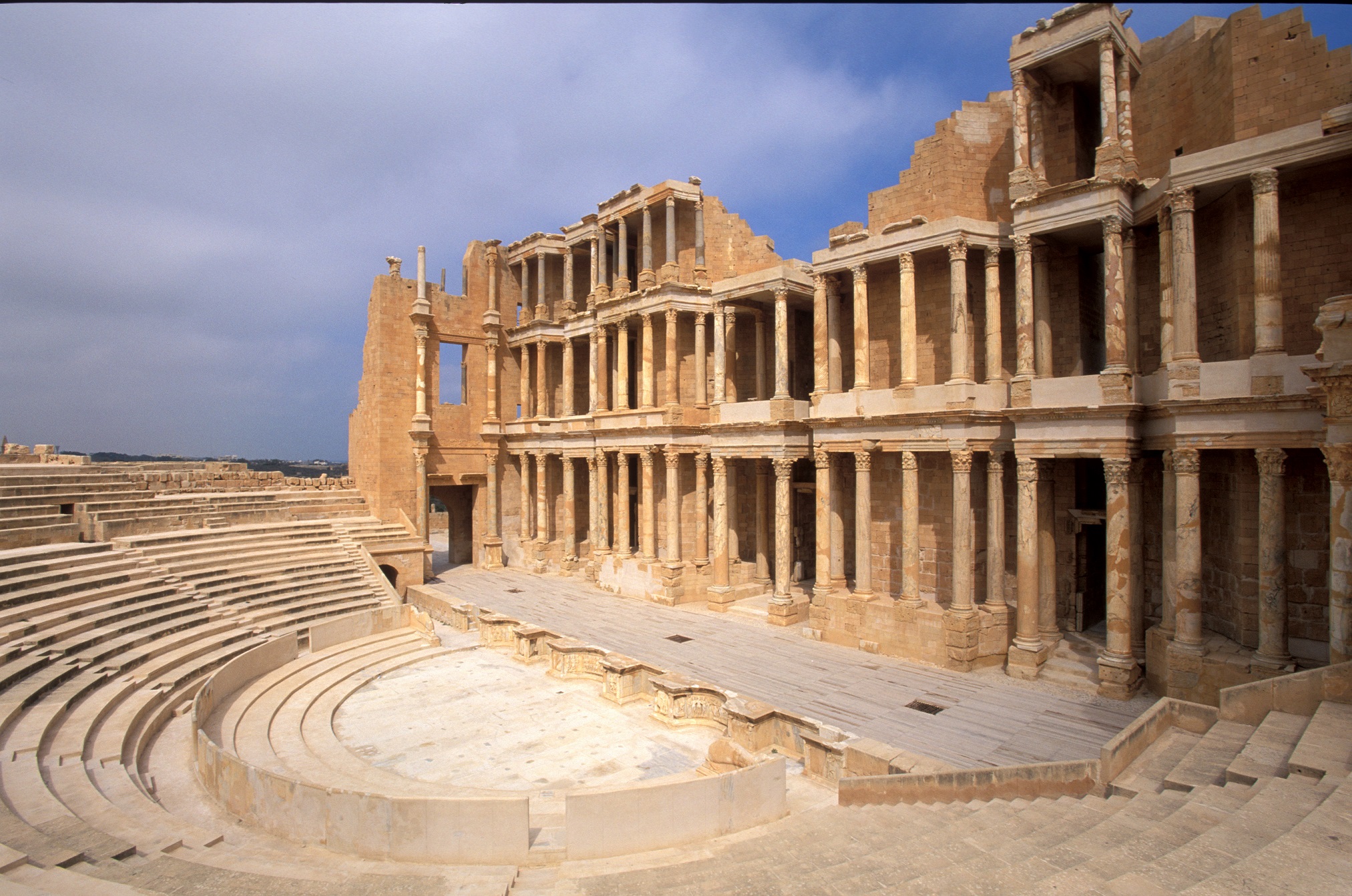
-
IncludedAccommodations 3 star full board.English speaking guide.Meals as per itinerary.Excursion fees.Transfers.Transport.Libya invitation letter.Tourist Police escort.4x4 Ras al Ghoul, desert tour to see the sunset at Algerian border.Water in the car.24 hours assistance.Local travel permits.
-
Not IncludedFlights.Consumptions in hotel.Fees.Insurance.